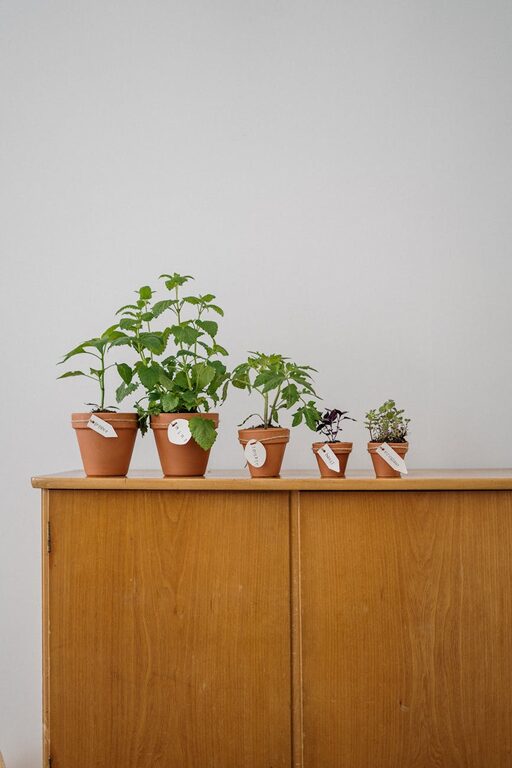Starting a small herb garden indoors is a rewarding way to bring fresh flavors right to your kitchen. Whether you have limited outdoor space or want fresh herbs year-round, growing herbs inside is easy and enjoyable. In this guide, we’ll walk you through the essentials to get your indoor herb garden started and thriving.
Why Grow Herbs Indoors?
Growing herbs indoors offers many benefits:
– Fresh ingredients for cooking anytime
– Saves money compared to buying fresh herbs regularly
– Adds greenery and fragrance to your home
– Great for beginners and those with limited outdoor space
With minimal supplies and a bit of care, you can enjoy fresh herbs throughout the year.
Choosing the Right Herbs for Indoor Gardening
Certain herbs are better suited for indoor growth because they adapt well to container life and typical indoor conditions. Here are some excellent choices for beginners:
– Basil: Requires moderate sunlight and warmth.
– Parsley: Does well in moderate light and cooler temps.
– Mint: Grows vigorously, best kept in its own pot.
– Chives: Needs bright light and regular watering.
– Thyme: Prefers sunny spots and well-drained soil.
– Cilantro: Likes cooler temperatures and bright, indirect light.
– Oregano: Thrives with full sun and dry conditions.
Pick herbs you use frequently to maximize your enjoyment.
What You’ll Need to Get Started
Here’s a simple list of supplies for starting your indoor herb garden:
– Containers: Small pots or window boxes with drainage holes.
– Potting mix: Use a light, well-draining potting soil formulated for herbs or vegetables.
– Seeds or seedlings: Choose quality seeds or buy small starter plants.
– Light source: A sunny windowsill with at least 6 hours of sunlight or a grow light.
– Watering can: For controlled watering.
– Labels (optional): To keep track of your herbs.
Step-by-Step Guide to Planting Your Indoor Herb Garden
1. Choose Your Location
Find a spot with enough natural light—most herbs need about 6 hours daily. South- or west-facing windows are ideal. If sunlight is limited, consider using an LED grow light designed for plants.
2. Prepare Your Containers
Fill your pots with potting mix, leaving about an inch of space from the top. Make sure the pots have drainage holes to prevent waterlogging, which can damage roots.
3. Plant Seeds or Transplants
– If using seeds: Follow the instructions on the packet for planting depth. Typically, cover seeds lightly with soil and water gently.
– If transplanting seedlings: Dig a small hole in the soil and place the seedling’s roots inside. Gently press the soil around the base to secure the plant.
4. Water Carefully
Water the soil until it feels moist but not soggy. Maintain consistent moisture, allowing the surface to dry slightly between waterings. Avoid overwatering to prevent root rot.
5. Maintain Your Herbs
– Lighting: Rotate pots occasionally for even growth.
– Pruning: Regularly pinch or trim herbs to encourage bushier growth.
– Fertilizing: Use a diluted, balanced liquid fertilizer every 4-6 weeks during the growing season.
Tips for Success
– Keep humidity moderate: Indoor air can be dry; mist plants occasionally or place a small dish of water nearby.
– Watch for pests: Check leaves for aphids or spider mites and wipe them off with a damp cloth.
– Harvest regularly: Frequent harvesting promotes healthy, continuous growth.
– Avoid cold drafts: Herbs prefer stable temperatures between 65-75°F (18-24°C).
Troubleshooting Common Issues
– Yellow leaves: May indicate overwatering or lack of nutrients.
– Leggy plants: Often a sign of insufficient light. Move to a brighter spot or use grow lights.
– Wilting: Could be underwatering or root problems; check soil moisture.
Creative Ways to Use Your Indoor Herb Garden
Once your herbs start growing, you can use them in various ways:
– Fresh garnishes for soups, salads, and pastas
– Homemade pesto or herbal sauces
– Flavored oils and vinegars
– Herbal teas and infusions
– Natural air fresheners by placing cut herbs in small vases
Conclusion
Starting a small herb garden indoors is simple, cost-effective, and highly satisfying. With the right herbs, containers, light, and care, you can create a green oasis in your kitchen that keeps on giving delicious, fresh herbs all year long. Happy gardening!

